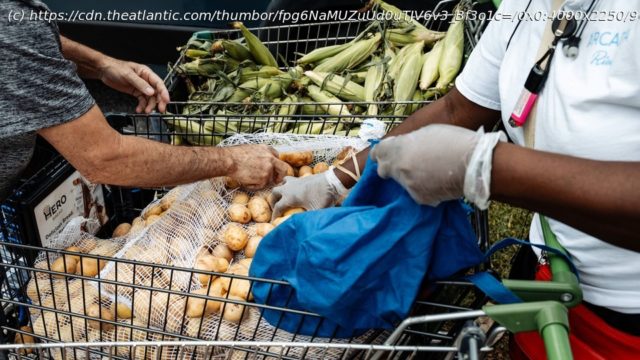Its effects will linger for some time.
The longest-ever government shutdown ended on November 12, but Deairra Tracey is still scared.
The disabled mother of three from Perth Amboy, New Jersey, had to visit food banks and skip meals so that her children could eat after the Supplemental Nutrition Assistance Program abruptly stopped paying out benefits on November 1. After running out of money to buy milk and watching her refrigerator go bare as Congress held a series of failed votes on a funding bill, Tracey told me, she now lives in fear that the federal aid she receives could be cut off again. She is filling her freezer with low-cost items and stocking up on nonperishables in case Congress closes the government again next year.
“I’m going to make sure I have everything that I need to make sure my children are good,” she said. “I have been super stressed, but you have to do what you have to do as a parent, right?”
In the week since the record-setting 43-day shutdown ended, more than 1 million federal workers have resumed their jobs and begun receiving back pay, food aid has started flowing again to 42 million Americans like Tracey, and the air-travel limitations that snarled airports have been lifted. The Congressional Budget Office estimated that the billions of dollars the shutdown sapped from the economy will mostly reappear in the form of higher spending in future months, limiting the long-term net impact to little more than a rounding error off America’s $30 trillion GDP.
But millions of Americans face effects from the shutdown that linger in ways that economists may struggle to capture. Infrastructure projects that the Trump administration canceled during the shutdown in an attempt to punish Democrats have cost thousands of good-paying jobs. Farmers who were forced to wait weeks for a promised federal bailout are now approaching the winter planting season with a level of uncertainty that could prove existential. Airports’ ongoing challenges could disrupt travel during Thanksgiving and beyond. Federal workers now back on the job are battling sinking morale and productivity from both the shutdown and months of steep cuts and instability.
The political reverberations continue as both parties gear up for renewed debates over health care, affordability, and government funding in December and January. Democrats erupted into a public fight after eight senators broke from their caucus to reopen the government and fund it through January 30—at which point Congress will again have to choose whether to fund the government or close it down. Some Democrats have called for Senate Minority Leader Chuck Schumer to be replaced, and others wonder whether the collateral damage the country sustained during their standoff against Trump was worth it.
Trump said this week he would not support any legislation that extended subsidies for the Affordable Care Act, the main policy goal for Democrats who withheld their votes to fund the government. Still, Senator Tim Kaine, a Democrat from Virginia, told me he stands by his choice to vote to reopen the government. Kaine said that he was hearing regularly from constituents about the hardship the shutdown was creating for SNAP recipients, federal workers, and the air-travel system, and that he saw no scenario in which holding out would persuade Republicans to change course. “I think it’s fair to test another side’s red lines in a negotiation,” he said. “But at some point, when you’ve tested them a dozen times over 40 days, then you’re not just testing a red line.






